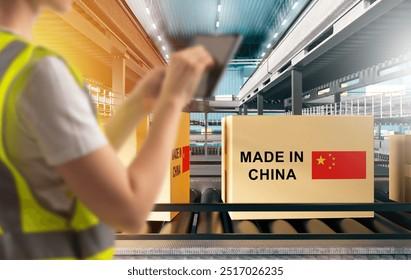Prices of China-made goods sold on Amazon in the United States are climbing at a rate exceeding overall inflation, according to a recent Reuters analysis. The sharp rise comes amid ongoing tariff pressures and supply chain challenges that continue to impact costs for both retailers and consumers. The data highlights how trade tensions and policy measures are directly influencing everyday prices in the U.S. marketplace, raising concerns about the broader economic effects of tariffs on imported goods.
US Consumers Face Steeper Costs Amid Rising Prices of China-Made Goods on Amazon
Recent data from market analysts reveals that the prices of China-origin products sold on Amazon have been outpacing the general inflation rate in the United States. This surge is largely attributed to escalating tariffs and supply chain constraints that have pushed import costs higher. Consumers are now facing a growing financial burden on everyday items ranging from electronics and household goods to apparel and accessories. Experts warn that as trade tensions persist, the trend of rising product prices is expected to continue, further straining household budgets amid an already challenging economic environment.
Key factors contributing to the price hikes include:
- Increased Tariff Rates: U.S. tariffs on Chinese imports have been intensified, adding a direct cost inflating product prices.
- Supply Chain Disruptions: Delays and higher freight costs have compounded the impact on retail pricing.
- Currency Fluctuations: The weakening U.S. dollar against the yuan increases costs for importers.
| Category | Average Price Increase (2023) | U.S. Inflation Rate (2023) | |||||||||||||||||||
|---|---|---|---|---|---|---|---|---|---|---|---|---|---|---|---|---|---|---|---|---|---|
| Electronics | 12.5% | 4.0% | |||||||||||||||||||
| Home Goods | 9.3% | 4.0% | |||||||||||||||||||
| Apparel | Tariff Impact Drives Faster Price Increases Than Inflation Across Key Product Categories
Recent analysis reveals that prices for China-made goods on Amazon are climbing at a rate significantly outpacing general inflation trends in the United States. The surge is largely attributable to the cumulative effect of tariffs imposed over the past few years, which are increasingly being passed on to consumers rather than absorbed by retailers or suppliers. This phenomenon is especially pronounced in electronics, home goods, and apparel categories, where tariff-related costs have added a substantial markup compared to pre-tariff pricing. Industry observers point to several key factors intensifying the price hikes:
Experts Advise Shoppers to Explore Alternatives and Monitor Tariff Policy DevelopmentsWith rising costs impacting a wide range of China-made products on Amazon, market analysts urge consumers to remain vigilant and consider alternative purchasing options. Experts emphasize the importance of seeking out domestic goods or suppliers from countries not subject to the current tariff regime, as this strategy could shield shoppers from sudden price surges. Retailers and consumers alike are encouraged to diversify their sourcing habits to mitigate the strain imposed by ongoing tariff adjustments. Monitoring changes in U.S. trade policy is now more crucial than ever. Recent data indicates that tariffs continue to weigh heavily on prices, with some categories experiencing increases well above the general inflation rate. The table below highlights select product segments affected by tariffs, offering a snapshot of price shifts for shoppers to consider when planning their purchases.
In RetrospectAs tariffs continue to reshape the trade landscape, the rising prices of China-made goods on Amazon underscore the broader economic challenges facing consumers and retailers alike. Analysts warn that unless tariff policies are reassessed, inflationary pressures may persist, affecting purchasing power and supply chain dynamics in the months ahead. This evolving situation warrants close monitoring as it influences both market behavior and international trade relations. |




